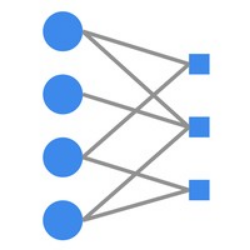Community detection, a fundamental task for network analysis, aims to partition a network into multiple sub-structures to help reveal their latent functions. Community detection has been extensively studied in and broadly applied to many real-world network problems. Classical approaches to community detection typically utilize probabilistic graphical models and adopt a variety of prior knowledge to infer community structures. As the problems that network methods try to solve and the network data to be analyzed become increasingly more sophisticated, new approaches have also been proposed and developed, particularly those that utilize deep learning and convert networked data into low dimensional representation. Despite all the recent advancement, there is still a lack of insightful understanding of the theoretical and methodological underpinning of community detection, which will be critically important for future development of the area of network analysis. In this paper, we develop and present a unified architecture of network community-finding methods to characterize the state-of-the-art of the field of community detection. Specifically, we provide a comprehensive review of the existing community detection methods and introduce a new taxonomy that divides the existing methods into two categories, namely probabilistic graphical model and deep learning. We then discuss in detail the main idea behind each method in the two categories. Furthermore, to promote future development of community detection, we release several benchmark datasets from several problem domains and highlight their applications to various network analysis tasks. We conclude with discussions of the challenges of the field and suggestions of possible directions for future research.
翻译:社区探测的典型方法通常使用概率图形模型,并采用各种先前的知识来推断社区结构。随着网络方法试图解决的问题和将要分析的网络数据日益复杂,还提出和制定了新的方法,特别是那些利用深层次学习和将网络数据转换为低维代表面的方法。尽管最近取得了种种进展,但社区探测的理论和方法基础仍然缺乏深刻的了解,而社区探测的理论和方法基础对于网络分析领域的未来发展至关重要。在本文件中,我们制定和提出一个统一的网络社区调查方法结构,以描述社区探测领域的现状和将要分析的网络数据。具体地说,我们对现有社区探测方法进行全面审查,并采用新的分类方法,将现有方法分为两类,即概率图形模型和深度学习。然后我们详细讨论社区探测的理论和方法基础,从两个类别中确定各种研究方向,然后确定今后各种研究方向,然后确定各种研究方向,然后确定今后各种研究方向,然后确定各种研究方向,然后确定各种研究方向,然后确定今后各种研究方向。我们随后详细讨论各种研究方向,从两个类别中确定各种研究方向。





